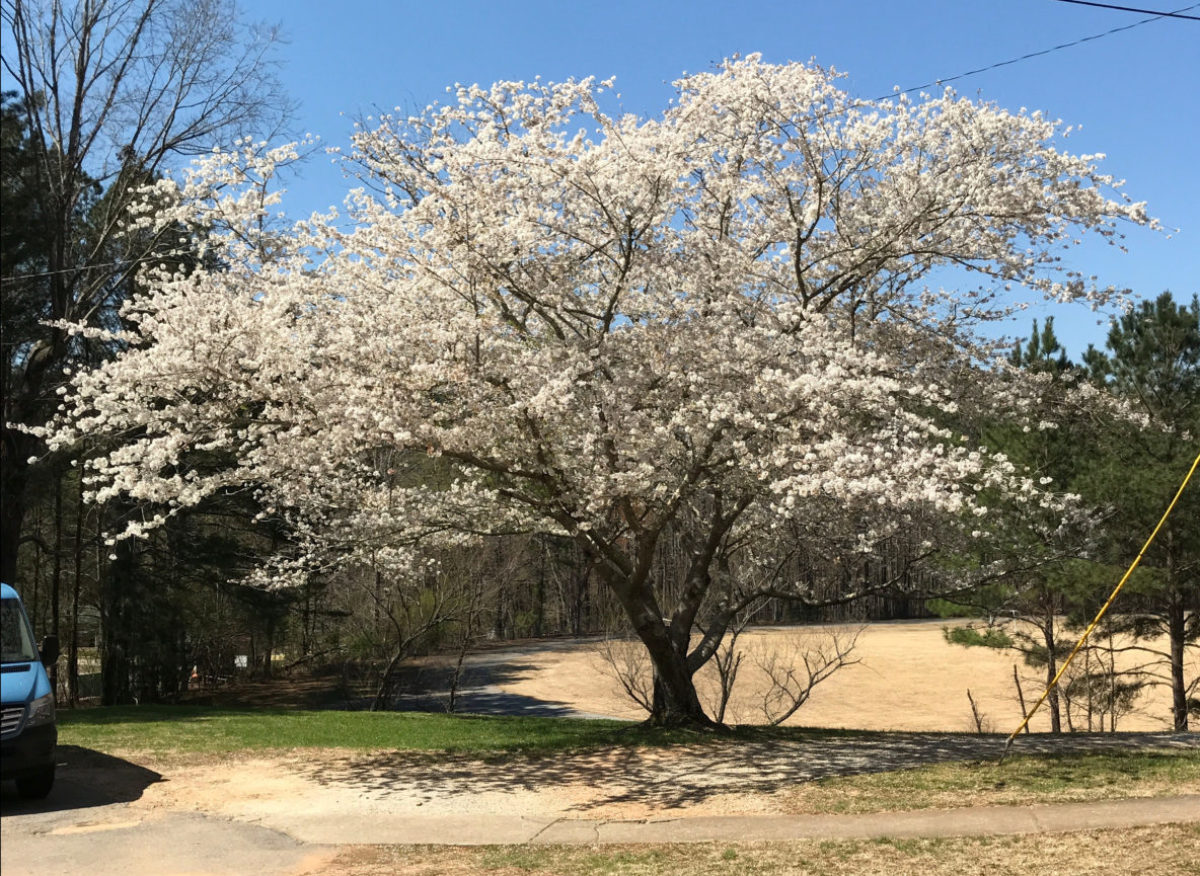 Sumac trees and shrubs may be found worldwide, and they are very common in the Atlanta, Georgia area. Most beautiful in fall and winter, they brighten the landscape with striking red leaves and drupes. They grow as shrubs or small trees, often to 25 to 35 feet tall. Sumacs are most often found in thickets formed from shallow roots sending up new shoots, but single trees are also produced by seeds that were dropped by birds. The drupes are not fleshy or juicy berries as one might expect, but are dry seeds with a thin coating- many with tiny hairs. This common tree has interesting features.
Sumac trees and shrubs may be found worldwide, and they are very common in the Atlanta, Georgia area. Most beautiful in fall and winter, they brighten the landscape with striking red leaves and drupes. They grow as shrubs or small trees, often to 25 to 35 feet tall. Sumacs are most often found in thickets formed from shallow roots sending up new shoots, but single trees are also produced by seeds that were dropped by birds. The drupes are not fleshy or juicy berries as one might expect, but are dry seeds with a thin coating- many with tiny hairs. This common tree has interesting features.
Sumac is in the family Anacardiaceae, genus Rhus. These are the species most common to  the Atlanta, Georgia area:
the Atlanta, Georgia area:
– Stag sumac, which has upright, tight red clusters of drupes at the end of hairy branches. These drupes tend to be more tart in taste than winged or smooth sumac. The drupes are also hairy. Stag sumac gets its name from the resemblance of its branches to the velvety antlers of a male deer (stag). The hairs help protect the plant from animals, who are irritated by the hairs. The leaflets have saw-tooth edges.
– Winged sumac, noted for the marginal wings between the leaflets. It has no hairs on branches or drupes. It has upright, tight red clusters of drupes at the end of its branches. Leaflets have smooth edges. 
–Smooth sumac, which is similar to winged sumac but has no marginal wings between the leaflets. When I saw the tree in the last picture, the loose, drooping berries and no visible serration on leaves led me to be cautious that it was poison sumac. I did not feel leaf edge for smoothness thinking it was poison. Now, in magnification of the picture, though leaves are more oval than lanceolate, I see faint serration. Due to this and the fact that berries are dark and not green or white, I belive it is more likely smooth sumac. I would maintain caution around trees giving such mixed signals.

– Poison sumac, easily identified by these differences from non-poisonous sumac: Leaflets are not saw-tooth but have smooth margins. They are more oval or oblong. Leaflets are on bright red stems. Drupes are not tight clusters but loose, white berries that hang down. Like poison ivy and poison oak, poison sumac tends to grow in low, moist areas and not in higher elevations. No poison sumac is pictured.
Sumac belongs to the same family as cashews, pistachios and mangoes- which all produce allergic reactions in some people. However, this poison species of sumac is rarely encountered in drier areas of the YV Inner Harbour campus but may be found in  lower areas with wet and moist soil.
lower areas with wet and moist soil.
The sumac tree has many interesting properties and uses. Dried sumac wood is fluorescent under ultra violet light. It carves and turns well, and is a favorite of woodworkers. Pithy stems may be hollowed to make pipe stems. Leaves and bark are a source of tannin, which is used to tan Moroccan-quality leather. The seeds are used in spices to accent foods. Native Americans enjoyed a drink made from the red drupes that was commonly called Indian lemonade. Drupes are more flavorful some years than others, and those produced by the stag sumac species has the most flavor. Bright red drupes produce a  lemony flavor, and more mature, darker red drupes produce a more fruity flavor that is very similar to popular drinks such as Kool-Aide. Drinks are made by crushing the drupes in boiling hot water to release the flavor, and carefully straining the flavored liquid through a cloth to filter out the minute hairs. Dilute and sweeten to taste. The concentrate can be frozen for later use. I have made both Indian lemonade and sumac jelly using this process, and both were delicious.
lemony flavor, and more mature, darker red drupes produce a more fruity flavor that is very similar to popular drinks such as Kool-Aide. Drinks are made by crushing the drupes in boiling hot water to release the flavor, and carefully straining the flavored liquid through a cloth to filter out the minute hairs. Dilute and sweeten to taste. The concentrate can be frozen for later use. I have made both Indian lemonade and sumac jelly using this process, and both were delicious.
There are many beautiful sumac trees and shrubs growing on the YV Inner Harbour campus in Douglasville, Georgia, and none of them were planted in the landscape. Despite its invasive nature, there is much to enjoy  about this tree.
about this tree.
The ad below features ground sumac spice, which is considered an essential spice for Mediterranean and Middle Eastern cooking. It has a tangy lemony flavor that is great on vegetables, grilled lamb, chicken, and fish. This spice and others are available for purchase here through my participation in the Amazon Services LLC Associates Program. Any purchase through this link helps maintain this website and is appreciated.



Hi David,
Would you happen to know a location in Atlanta that non-poisonous sumac can b wild harvested? I’m looking to make a tincture with it.
Thanks,
Brianna